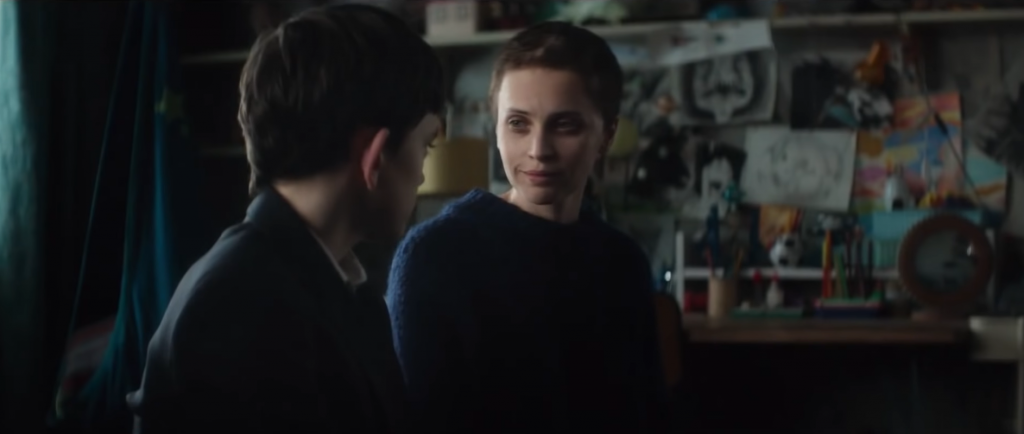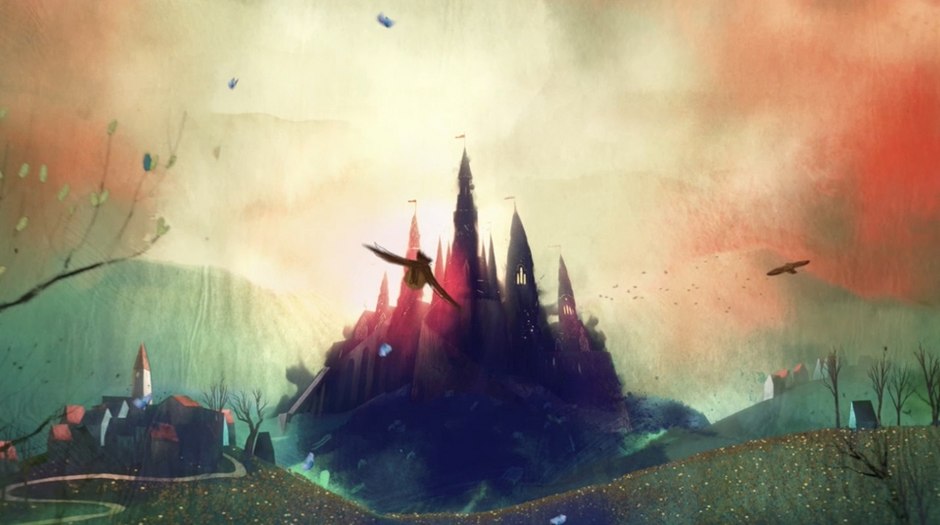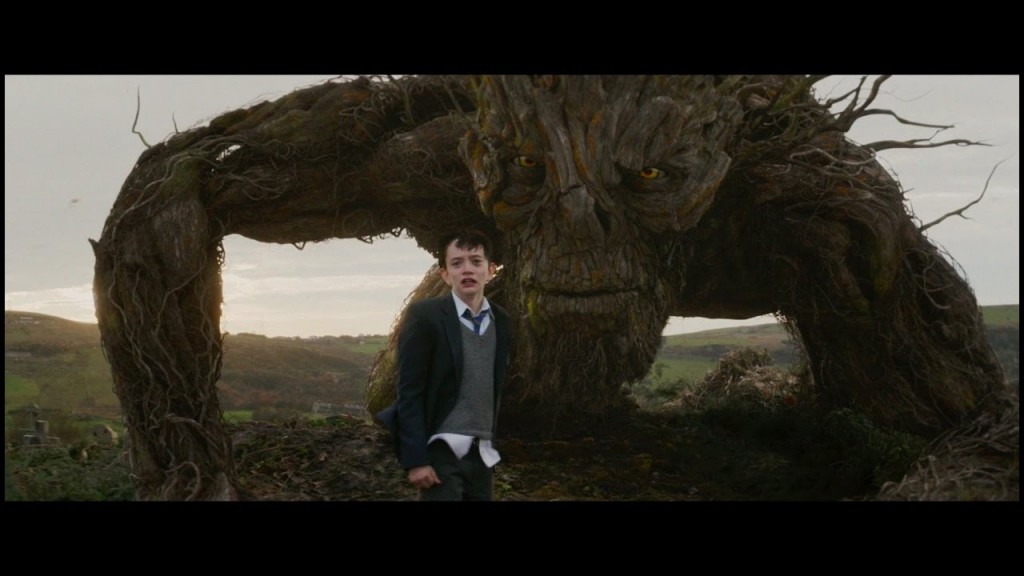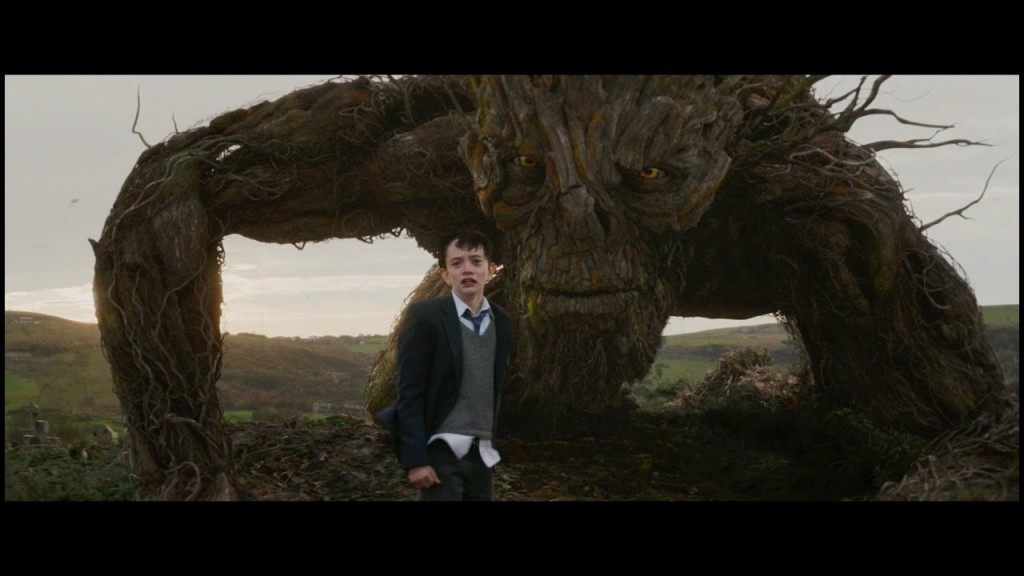Directed by J.A. Bayona, ‘A Monster Calls’ is a fantasy drama that explores the effects of grief and pangs of separation. Based on Patrick Ness’ novel of the same name, the film is a veritable adaptation of the book. ‘A Monster Calls’ tells the story of young Conor (Lewis MacDougall), who has to look after his terminally-ill mother, Elisabeth (Felicity Jones), and at the same time, take care of himself. Facing bullying in school, Conor withdraws into flights of fancy created through drawings- a talent that he inherits from his mother.
Much like the protagonist of Irish writer Frank O’ Connor’s short story, ‘Man of the House,’ Conor has to stand tall against adverse situations at a tender age. One fine day, Conor is visited by a giant anthropomorphic yew tree that tells him three stories that hold the key to the film’s fantastic narrative. The sprawling locations and marvelous animated sequences accentuate the poignancy that runs throughout the film. We were enthralled by it and thus decided to read between its nuances. Here’s what we have deciphered for you. SPOILERS AHEAD.
A Monster Calls Plot Details
Conor is a young kid living with his mother, who is in critical condition. His grandmother (Sigourney Weaver) visits him and tells him that he can stay with her in the eventuality of his mother’s death. Conor doesn’t want to accept this offer as he is wary of his grandmother’s cold behavior. His school life is also turbulent as his classmate, Harry, constantly bullies him. In addition to this, he has a recurring nightmare in which he sees the church overlooking his house crumbling to the ground.
He desperately tries to save someone from plummeting deep within but fails to do so. This image haunts Conor constantly, and he finds refuge in his drawings. One night, the giant yew tree near the church comes to life and visits Conor at exactly seven minutes past midnight. The yew tree takes the shape of a monster and says that Conor has summoned him. The monster will supposedly tell him three fables in their subsequent meetings, whereas the fourth one has to come from Conor.
In the monster’s first story, a young prince escapes from his step-mother, who supposedly poisoned his father. He eventually murders his bride to create a ruse implicating the queen for the deed. He attacks the kingdom on this pretext, but the giant tree monster saves the queen. The second fable is about an apothecary who is barred by a parson from extracting his medicines from a yew tree. The parson’s children fall sick and cannot be cured by any measure. He asks the apothecary to help him, but the latter refuses.
The monster then destroys the parson’s house as punishment for him being hard-hearted. Conor enthusiastically joins the monster in the destruction but finds that he has vandalized his grandmother’s living room. The third fable is about an invisible person who is tired of not being acknowledged. All these fables somehow connect with Conor’s life, and his actions are intertwined with them. The fourth fable is actually a form of self-realization for Conor, and he ends up confessing his deep feelings. The culminating act is a heart-wrenching moment that sums up the film beautifully.
A Monster Calls Ending: What Happens to Conor’s Mother?
When it becomes clear that Conor’s mother is about to die, he runs to the yew tree, asking it to save her. The monster appears and tells him that it was never a part of his responsibility. Conor is forced to relive his nightmare of the collapsing church where he has to save his mother from plunging deep into the abyss. Emotionally wrecked, Conor tells the fourth tale, stating that he knew his mother would die someday and had longed for her death.

He believes that his wish had brought upon the deteriorating condition of his mother. The monster clarifies that his wish was to end the suffering, an innocent desire that absolves the guilt building within Conor. He is able to meet his mother one last time, after which she passes away. Conor’s mother could feel that he was reaching deep into his fantasy world to cope with his emotions.
In the scene where she nods to the monster, it can be understood that she could actually fathom the grief of her little kid. It beautifully surmises the bond that a mother shares with her child, wherein she can understand things even if they are unsaid. A perfect denouement to a somber premise, Elisabeth’s death prompts an outcry by Conor, to which the monster says, “You were merely wishing for an end of pain. Your own pain. It is the most human wish there is.”
Are the Monster’s Stories Related to Conor’s Life?
The three stories that the monster tells Conor has one connecting link, i.e., the monster himself. The first story about the prince and her step-mother reflects the relationship between Conor and her grandmother. Conor dislikes her for her strong-worded nature but, in the end, agrees to reconcile. In a particular sequence, when Conor participates with the monster in destroying the parson’s house (the second story), he ends up trashing his grandmother’s place.

Conor fears the repercussions of his actions, but his grandmother pardons him saying that there is no point in punishment. This goes to show that despite having a hard exterior, she empathizes with Conor. Even though Conor’s act merits punishment, as was the case with the apothecary for not helping the parson, it turns out that every act has a precursor that needs to be weighed in before judgment. The same holds true for Conor as well because he is unable to look through his grandmother’s toughness. Nevertheless, he manages to do so owing to the monster’s guidance.
The third story is most intimately linked with Conor’s life. The invisible man, who is tired of his state, is actually symbolic of Conor’s interaction with his bully, Harry. Harry tells Conor that he won’t bully him anymore because he no longer “sees him.” This instance is translated into the monster’s story wherein Conor calls him to exact his revenge on the bully. As a consequence of his action, the whole world can now see him. The school principal acknowledges Conor’s presence and refuses to punish him owing to his situation at home. The stories told by the monster are reflective of Conor’s life and the emotional doldrums that he has to traverse to stand firm.
Is the Monster Real?
The film’s final sequence depicts Elisabeth’s drawings featuring the monster and the stories that were told to Conor. The monster is perhaps a figment of Conor’s imagination and the visual representation of his coping mechanism. The extreme tribulations force Conor to resort to fantasy, and thus, the characters come to life acting as a conduit to channelize his feelings.

It is also shown in an old photograph that Liam Neeson (Monster’s voice) is along with Conor’s grandmother. Perhaps the filmmaker decided to give the monster the identity of Conor’s grandfather, probably a cinematic liberty that warms up the film’s narrative. The existence of the monster is open to interpretation- it reflects Conor’s perception of himself or perhaps a pagan spirit that answers the call of the child.
Read More: Where Was A Monster Calls Filmed?


You must be logged in to post a comment.